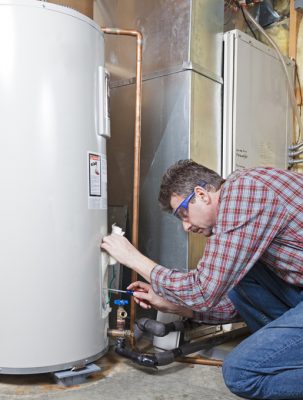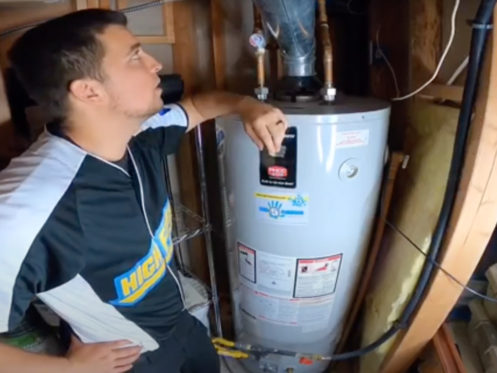Top Ways to Care for Your Home's Hot Water System Effectively
Top Ways to Care for Your Home's Hot Water System Effectively
Blog Article
We have unearthed this great article pertaining to Water Heater Maintenance Tips You Can't Afford to Forget below on the net and think it made perfect sense to relate it with you over here.

Hot water is important for daily comfort, whether it's for a rejuvenating shower or cleaning dishes. To guarantee your hot water system runs effectively and lasts longer, normal maintenance is key. This short article provides sensible tips and understandings on exactly how to maintain your home's warm water system to stay clear of interruptions and costly repair services.
Introduction
Keeping your home's hot water system could appear complicated, however with a few easy steps, you can guarantee it operates efficiently for many years to come. This overview covers everything from recognizing your warm water system to DIY upkeep ideas and knowing when to call expert assistance.
Significance of Maintaining Your Warm Water System
Routine maintenance not just extends the life-span of your warm water system yet likewise ensures it runs successfully. Overlooking upkeep can lead to reduced efficiency, greater energy costs, and even early failing of the system.
Signs Your Warm Water System Requirements Maintenance
Understanding when your warm water system needs attention can prevent significant concerns. Look out for indications such as irregular water temperature, odd sounds from the heating unit, or corroded water.
Understanding Your Hot Water System
Prior to diving into maintenance jobs, it's valuable to recognize the basic components of your hot water system. Typically, this includes the water heater itself, pipelines, anode poles, and temperature controls.
Month-to-month Maintenance Tasks
Normal monthly checks can aid catch minor problems prior to they rise.
Flushing the Water Heater
Purging your water heater eliminates debris accumulation, enhancing effectiveness and extending its life.
Monitoring and Replacing Anode Rods
Anode rods protect against corrosion inside the storage tank. Inspecting and changing them when broken is crucial.
Examining and Adjusting Temperature Level Setups
Changing the temperature settings ensures ideal performance and safety and security.
DIY Tips for Upkeep
You can execute numerous maintenance jobs yourself to keep your warm water system in leading problem.
Checking for Leaks
Consistently evaluate pipelines and links for leakages, as these can bring about water damages and greater expenses.
Testing Pressure Relief Valves
Evaluating the pressure relief valve guarantees it operates properly and stops extreme stress accumulation.
Protecting Pipelines
Insulating warm water pipelines reduces warmth loss and can conserve energy.
When to Call a Professional
While DIY maintenance is useful, some concerns call for expert experience.
Facility Concerns Calling For Specialist Assistance
Examples consist of significant leakages, electric troubles, or if your hot water heater is continually underperforming.
Routine Expert Maintenance Benefits
Specialist maintenance can consist of thorough inspections, tune-ups, and making certain compliance with safety criteria.
Conclusion
Routine upkeep of your home's hot water system is essential for effectiveness, durability, and expense financial savings. By complying with these tips and understanding when to seek expert aid, you can make sure a dependable supply of warm water without unforeseen disturbances.
How to Maintain an Instant Hot Water Heater
Before tinkering with your hot water heater, make sure that it’s not powered on. You also have to turn off the main circuit breaker and shut off the main gas line to prevent accidents. Also turn off the water valves connected to your unit to prevent water from flowing into and out of the appliance. 2. When you’re done, you have to detach the purge valves’ caps. These look like the letter “T†and are situated on either side of the water valves. Doing so will release any pressure that has accumulated inside the valves while at the same time avoid hot water from shooting out and burning your skin. 3. When the purge valves’ caps are removed, you have to connect your hosing lines to the valves. Your unit should have come with three hoses but if it didn’t, you can purchase these things from any hardware or home repair shops. You can also get them from retail stores that sell water heating systems. Read the user’s manual and follow it to complete this task properly. When the hosing lines are connected, open the purge port’s valves. 4. You should never use harsh chemical cleaners or solutions when cleaning your unit. Make use of white vinegar instead. It should be undiluted and you’ll probably use about 2 gallons. 5. Now flush your water heater. This task should probably take about 40 minutes. We can’t give you specific directions for this because the procedure is carried out depending on the type, model and brand of your heater. With that being said, refer to the user’s manual. 6. When you’re done draining the unit, you have to turn off the purge port valves again. Remove the hosing lines that you earlier installed on each of the water valves. Put the valve caps (purge port) back in their respective places and be very careful so as not to damage the rubber discs that are found inside these caps. 7. Now that everything’s back in place, check your user’s manual again to find out how to reactivate your water heating system. 8. Once it is working, turn one of your hot water faucets on just to let air pass through the heater’s water supply pipes. Leave the tap on until water flows smoothly out of it. https://www.orrplumbing.com/blog/2014/september/how-to-maintain-an-instant-hot-water-heater/

Hopefully you enjoyed our post about How to Maintain a Hot Water Heater in a Few Simple Steps. Thanks a lot for taking time to read our short article. Enjoyed our review? Please share it. Let another person locate it. Thank you for going through it.
This Page Report this page